Australian Tropical Rainforest Plants - Online edition
Neolitsea dealbata (R.Br.) Merr.

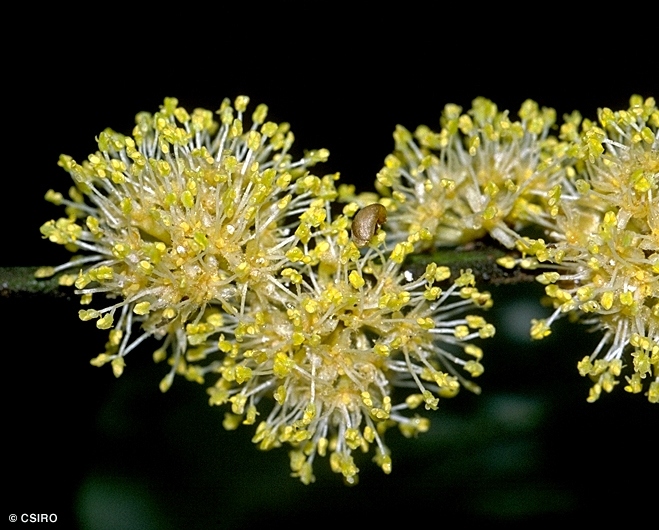
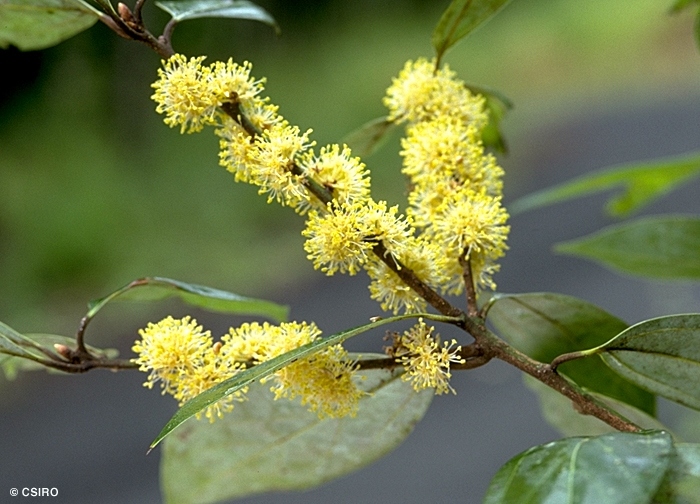

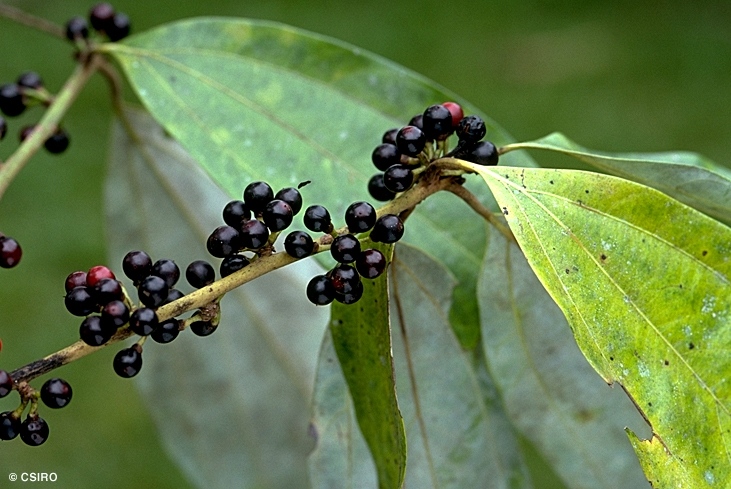
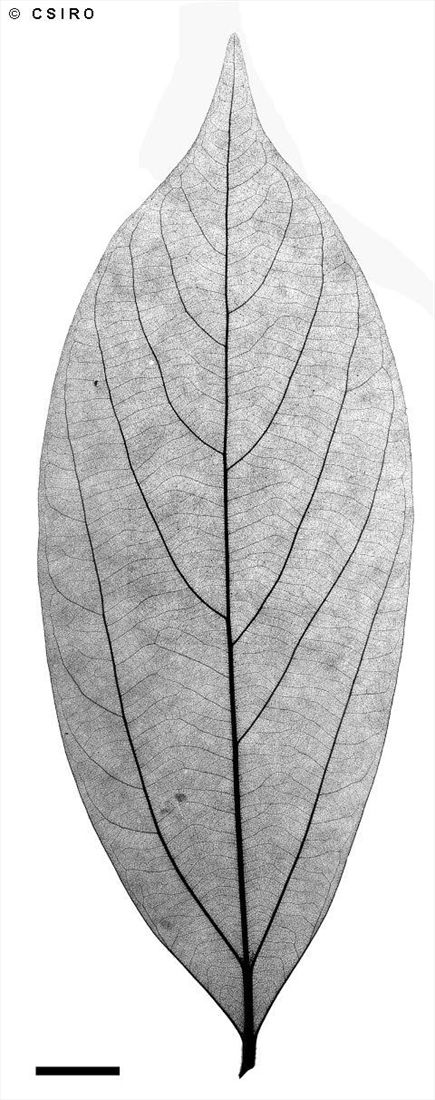

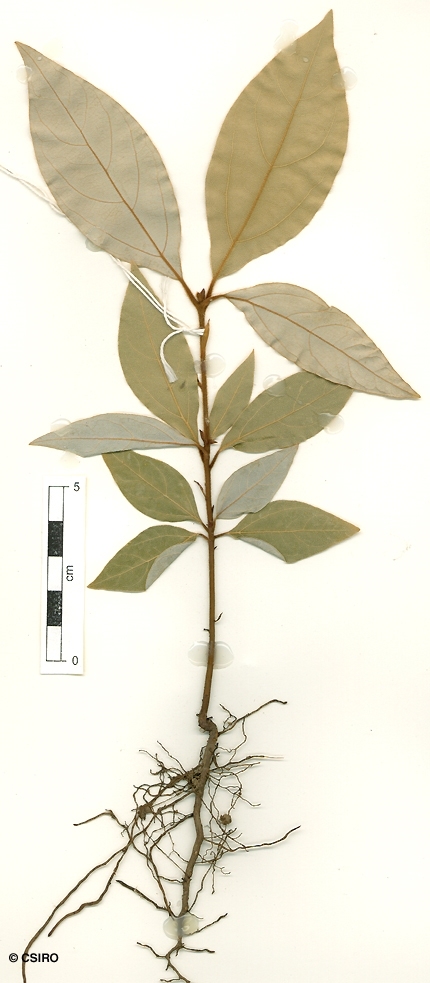
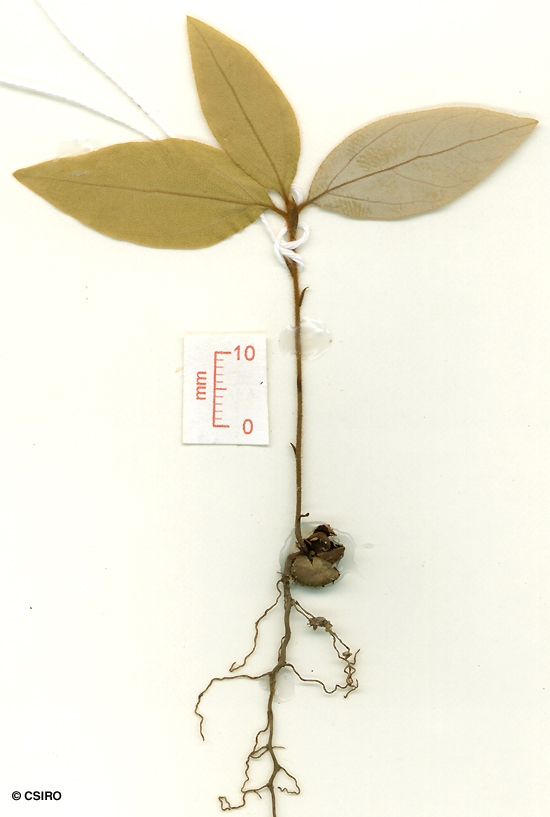
Merrill, E.D. (1948) Journal of the Arnold Arboretum 29: 200.
Hairy Leaved Bollygum; Grey Bollywood; Black Ash; Bollygum, Hairy Leaved; Bollygum, White; Bollywood, Grey; Bollywood, White; Pigeon-berry Tree; Velvet-leaf Bollywood; White Bollygum; White Bollywood; Native Mulberry
Seldom exceeding 30 cm dbh. Blaze darkens to dull brown on exposure.
Twigs terete, clothed in long, tortuous, white or pale brown, erect hairs which persist even on mature twigs. Leaves almost whorled or clustered in groups of 3-5. Leaf blades about 8-22 x 3.5-8.5 cm, white or glaucous on the underside, clothed in straight and tortuous, brown or pale brown, appressed hairs which persist to some extent even on old leaves. Midrib raised on the upper surface. Petioles flat or channelled on the upper surface. Oil dots visible with a lens.
Inflorescence bracts absent at anthesis. Male flowers: Tepals about 2.4-6 mm long, usually with a pistillode. Stamens about 4-8 per flower. Female flowers: Tepals about 1.7-2.3 mm long. Glands attached close to the base of the inner staminodes. Ovary glabrous or hairy towards the apex.
Fruits globular, about 9-11 x 8.5-11 mm. Receptacle about 7-9.5 x 3.5-5 mm. Seed about 5.5-7 x 5.5-9 mm. Cotyledons cream or white.
First pair of leaves lanceolate or ovate, about 26-39 x 12-18 mm, white or glaucous on the underside, 3-veined at the base. At the tenth leaf stage: leaves elliptic to ovate, apex acuminate, base cuneate, upper surface glabrous or with a few hairs near the base of the midrib and about the margin of the leaf blade, underside glaucous or almost white; oil dots small, visible with a lens; leaves alternate or in whorls of three; cataphylls often occur among the true leaves. Seed germination time 36 to 231 days.
Endemic to Australia, occurs in CYP, NEQ, CEQ and southwards as far as south-eastern New South Wales. Altitudinal range from sea level to 1150 m. Grows in rain forest and wet sclerophyll forest. This species is favoured by disturbance and is a typical component of rain forest regrowth.
Fruit eaten by Cassowaries, Fruit Pigeons and presumably most other frugivorous birds. Cooper & Cooper (1994).
Food plant for the larval stages of the Blue Triangle Butterfly. Common & Waterhouse (1981). This species does not grow large enough to produce millable logs. Wood specific gravity 0.68. Hyland (1989).





